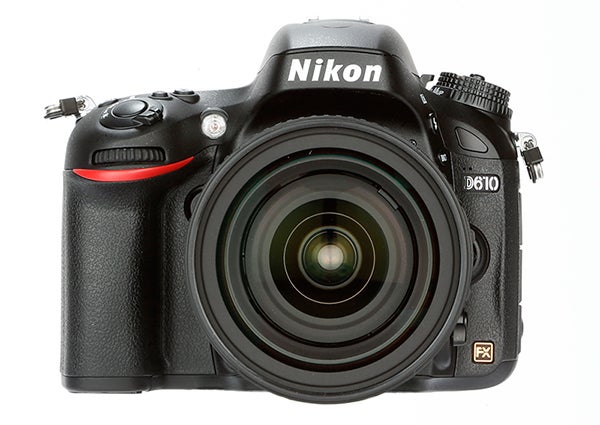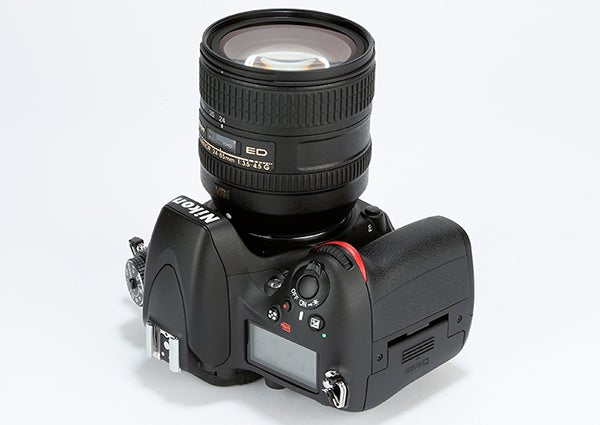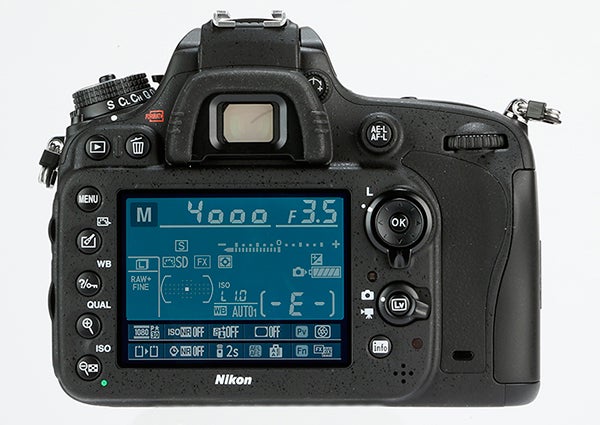Nikon D610 Review
Nikon D610
The Nikon D610 looks to right the infamous wrongs of its predecessor

Sections
- Page 1 Nikon D610 Review
- Page 2 Design and Performance Review
- Page 3 Image Quality and Verdict Review
Verdict
Pros
- First-class handling
- Great performance from the sensor
- Impressive AF performance
Cons
- No native Wi-Fi
- Too closely-grouped AF points
Key Specifications
- Review Price: £1799.00
- 24.3MP Full-frame CMOS sensor; 3.2-inch, 921k-dot TFT LCD; 3D colour matrix metering system; ISO 100 - 6400; 1920 x 1080 @ 30, 25 and 24fps
What is the Nikon D610?
The Nikon D610 follows relatively quickly on from its predecessor, the Nikon D600, with good reason.
Despite the Nikon D600 being the most affordable full-frame DSLR of all time on launch, it has its flaws, the most noticeable of which was that after a certain number of shutter actuations – around 3000 shots – some users experienced the appearance of unusual dust and oil spots in the upper left portion of the frame.
These spots – it was claimed – were a result of a fault with the camera’s shutter mechanism and although Nikon did issue a service notice, the D600 was avoided by those in the know.
So while the Nikon D610 does offer several new features, its role is more to the fix the tarnished reputation of its predecessor. Let’s take a closer look and see how it gets on.
Features
On the whole not a lot has changed, but this isn’t a bad thing as the Nikon D600 was an impressive high-end DSLR.
The core feature of the Nikon D610 remains its full frame CMOS sensor. The sensor offers a resolution of 24.3MP in Nikon’s FX format, while it also supports Nikon’s 1.5x DX crop mode, and therefore offers native support to Nikon’s DX lenses.

The sensor is accompanied by Nikon’s EXPEED 3 image processing engine which promises some impressive speeds, as well as facilitating a native ISO range of 100-6400, which can be extended from ISO 50 to ISO 25,600.
The rear of the camera sees the retention of Nikon’s 3.2-inch, 921k-dot LCD screen which features auto-adjustment technology to suit the brightness to that of the surrounding conditions.
In terms of AF performance, the Nikon D610 features the same pro-level 39-point AF system complete with 9 cross-type sensors and enhanced performance in low light conditions. The AF system also supports 3D focus tracking thanks to the D610’s Scene Recognition facility.

The Nikon D610 can also fit in with Nikon’s wireless flash system thanks to the built-in flash, with the added bonus of TTL or manual flash control.
The need to relaunch the Nikon D600 in the form of the Nikon D610 does appear to be somewhat of a missed opportunity in some respects, most noticeably in the fact that the D610 still doesn’t feature Wi-fi functionality. If you’re looking to use Wi-fi on the Nikon D610, you’ll have to stump up for the Nikon WU-1b mobile Wi-fi adapter.
The main area the Nikon D610 has redressed is the camera’s shutter system. Thanks to the noted issues with the D600’s shutter mechanism, the D610 now features a whole new unit that, while also hopefully more reliable than the predecessor, also comes with some performance improvements.
For example, the continuous shooting rate is now up to 6fps from 5.5fps, while a ‘Quiet Continuous’ mode of 3fps now arrives for discreet continuous shooting.
The D610 also sees some attention afforded to the auto white balance system, with Nikon claiming improved colour rendition in situations lit by artificial sources.

